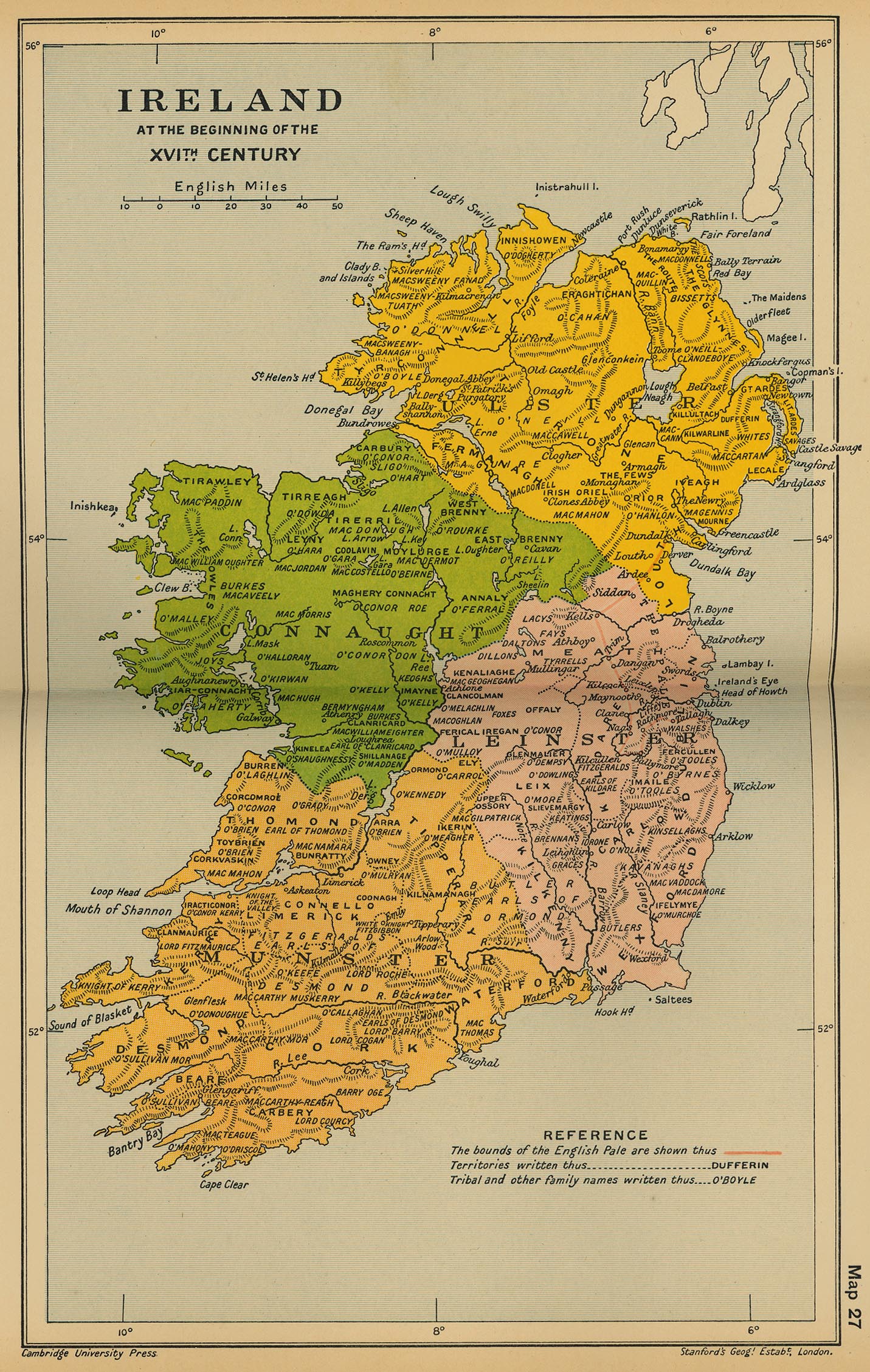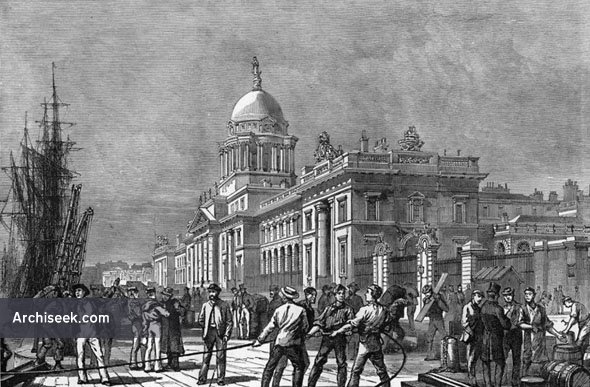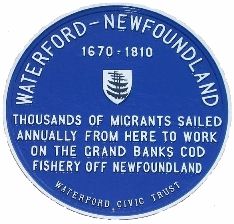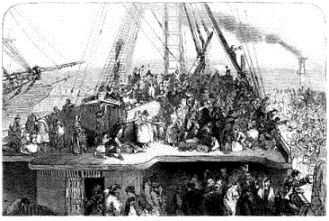Advertisement
If you have a new account but are having problems posting or verifying your account, please email us on hello@boards.ie for help. Thanks :)
Hello all! Please ensure that you are posting a new thread or question in the appropriate forum. The Feedback forum is overwhelmed with questions that are having to be moved elsewhere. If you need help to verify your account contact hello@boards.ie
Hi there,
There is an issue with role permissions that is being worked on at the moment.
If you are having trouble with access or permissions on regional forums please post here to get access: https://www.boards.ie/discussion/2058365403/you-do-not-have-permission-for-that#latest
There is an issue with role permissions that is being worked on at the moment.
If you are having trouble with access or permissions on regional forums please post here to get access: https://www.boards.ie/discussion/2058365403/you-do-not-have-permission-for-that#latest
Rum Sodomy & the Lash - Irish Maritime Times & Lore
-
07-01-2011 01:14AM#1
Comments
-
-
-
-
-
-
Advertisement
-
-
-
-
-
-
Advertisement
-
-
-
-
-
-
-
-
-
-
-
Advertisement
-
-
-
-
-
-
-
-
-
-
Advertisement
-
-
-
-
-
-
-
Advertisement
-
-
-
-
-
-
Advertisement
-
-
-
-
-
-
-
-
-
-
-
Advertisement
Advertisement

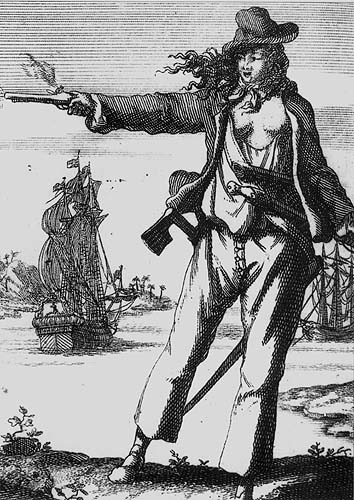
 In the summer of 1631 Baltimore fell victim to the most spectacular raid by pirates in Irish history. At that time the population consisted chiefly of settlers from England who had arrived some years earlier to work in the lucrative pilchard fishery under lease from the O'Driscoll chieftain, Sir Fineen O'Driscoll. Piracy was rife along the shores of West Cork, much of it of a home-grown variety. However, the danger in this case was from farther afield.
In the summer of 1631 Baltimore fell victim to the most spectacular raid by pirates in Irish history. At that time the population consisted chiefly of settlers from England who had arrived some years earlier to work in the lucrative pilchard fishery under lease from the O'Driscoll chieftain, Sir Fineen O'Driscoll. Piracy was rife along the shores of West Cork, much of it of a home-grown variety. However, the danger in this case was from farther afield. Her family had become wealthy mainly through fishing and trade, but in her later life, Grace took up piracy by taking on Turkish and Spanish pirate ships and even the English fleets. She grew her estate to include a fleet of ships as well as several islands and castles on the west coast of Ireland.
Her family had become wealthy mainly through fishing and trade, but in her later life, Grace took up piracy by taking on Turkish and Spanish pirate ships and even the English fleets. She grew her estate to include a fleet of ships as well as several islands and castles on the west coast of Ireland.  The O'Flahertys were a seafaring people, much like the O'Malleys, so Grace was right at home with their clan. Over the course of their marriage, Grace learned more about seafaring from Donal and his clan and added to her knowledge of sailing and trading at sea. Grace was soon in charge of the O'Flaherty fleet of ships and ruled the waters surrounding their lands. Although it was unusual for a woman to lead men, Grace earned the respect of all who followed her through her shrewdness as well as her knowledge of sailing and bravery at sea. Her husband, Donal, had a reputation for being quite a "hot head" and his temper eventually cost him his life in battle against a rival clan. They were married for a total of nineteen years.
The O'Flahertys were a seafaring people, much like the O'Malleys, so Grace was right at home with their clan. Over the course of their marriage, Grace learned more about seafaring from Donal and his clan and added to her knowledge of sailing and trading at sea. Grace was soon in charge of the O'Flaherty fleet of ships and ruled the waters surrounding their lands. Although it was unusual for a woman to lead men, Grace earned the respect of all who followed her through her shrewdness as well as her knowledge of sailing and bravery at sea. Her husband, Donal, had a reputation for being quite a "hot head" and his temper eventually cost him his life in battle against a rival clan. They were married for a total of nineteen years.  Ship's Rigging - Flickr
Ship's Rigging - Flickr Ship at Sea - Author Unknown
Ship at Sea - Author Unknown
 Captain Luke Ryan (Hibernian Magazine, May 1782)
Captain Luke Ryan (Hibernian Magazine, May 1782)

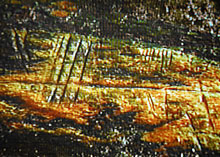 Irish petroglyph detail. Compare to the West Virginia petroglyph detail at the top left of this page. For the first time it is possible to say with some degree of certainty that there is real evidence of pre-Columbian visitors to the North American continent. In fact, you could say it is carved in stone. Twenty years of research leads to the conclusion that the same disciplines and tools were employed to create Ogam glyphs and Christian symbols (Chi-Rho) on rock faces in both southern West Virginia and southern Ireland.
Irish petroglyph detail. Compare to the West Virginia petroglyph detail at the top left of this page. For the first time it is possible to say with some degree of certainty that there is real evidence of pre-Columbian visitors to the North American continent. In fact, you could say it is carved in stone. Twenty years of research leads to the conclusion that the same disciplines and tools were employed to create Ogam glyphs and Christian symbols (Chi-Rho) on rock faces in both southern West Virginia and southern Ireland.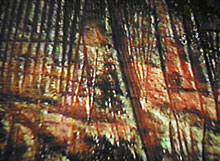 Another view of the recently discovered Irish petroglyph. Note the vertical Ogam markings. Dr. William Grant, Edinburgh University, Scotland, and Dr. John Grant, Oakland, Maryland, both Celtic linguists/scholars, participated in Pyle's Ogam research in southern West Virginia and endorsed the West Virginia petroglyphs as authentic archaic Ogam. The Grants were former students at the Catholic University in Washington, DC, under the direction of Dr. Robert Meyer, Celtic professor and linguist for 33 years.
Another view of the recently discovered Irish petroglyph. Note the vertical Ogam markings. Dr. William Grant, Edinburgh University, Scotland, and Dr. John Grant, Oakland, Maryland, both Celtic linguists/scholars, participated in Pyle's Ogam research in southern West Virginia and endorsed the West Virginia petroglyphs as authentic archaic Ogam. The Grants were former students at the Catholic University in Washington, DC, under the direction of Dr. Robert Meyer, Celtic professor and linguist for 33 years. Stephen O'Shea, Earl E. Hill, Dr. William Grant, Robert L. Pyle, Breda O'Shea, and Mike Baker. Photo taken in southern Ireland. The expedition was mounted by Dr. William Grant and led by Stephen O'Shea. Michael Baker, a film producer, and crew documented the entire expedition. Five hours of strenuous climbing led to the petroglyph location in a "wedge tomb" where Pyle immediately recognized the similarities between Irish and American petroglyphs. The panel is 8 feet high and 20 feet long, and the markings are textbook examples of the alphabet known as Ogam. Significant features include: (1) the Irish Ogam is identical in form to that found in West Virginia and Manchester, Kentucky; (2) it is identical in form to that found in the Book of Balleymote, which is located in the Royal Irish Academy in Dublin; (3) the same types of symbol are identified on artifacts and cliff carvings.
Stephen O'Shea, Earl E. Hill, Dr. William Grant, Robert L. Pyle, Breda O'Shea, and Mike Baker. Photo taken in southern Ireland. The expedition was mounted by Dr. William Grant and led by Stephen O'Shea. Michael Baker, a film producer, and crew documented the entire expedition. Five hours of strenuous climbing led to the petroglyph location in a "wedge tomb" where Pyle immediately recognized the similarities between Irish and American petroglyphs. The panel is 8 feet high and 20 feet long, and the markings are textbook examples of the alphabet known as Ogam. Significant features include: (1) the Irish Ogam is identical in form to that found in West Virginia and Manchester, Kentucky; (2) it is identical in form to that found in the Book of Balleymote, which is located in the Royal Irish Academy in Dublin; (3) the same types of symbol are identified on artifacts and cliff carvings.


